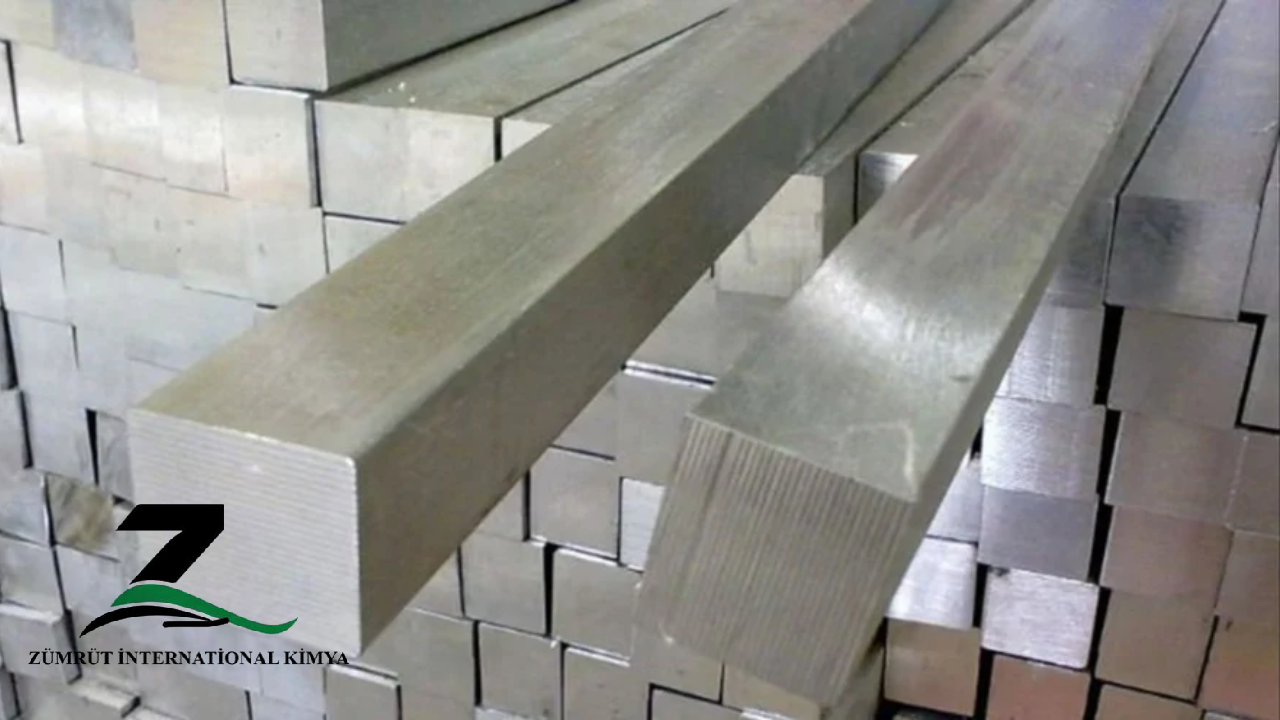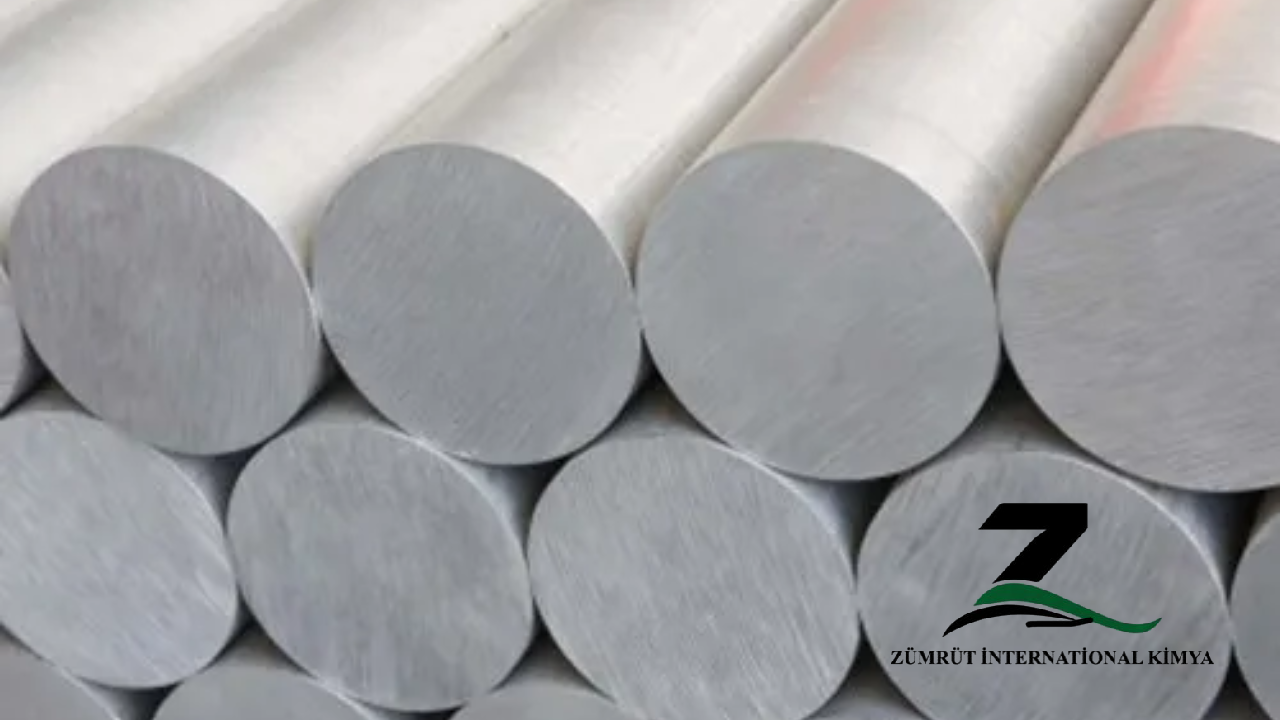
Introduction to Caustic Soda and Its Role in Aluminum Production
Caustic soda, also known as sodium hydroxide (NaOH), is a critical component in various industrial processes due to its high alkalinity. Its various applications range from paper and textile industries to the production of soap and detergents. One of its essential uses, which is the focus of this article, is in the aluminum production industry.
Aluminum is one of the most widely used metals globally due to its lightweight, high strength, and corrosion-resistant properties. Its production involves a two-step process: the Bayer process and the Hall-Héroult process. Caustic soda plays a vital role in the Bayer process, which is the first step in aluminum production.
In the Bayer process, bauxite, which is an aluminum ore, is digested in a solution of caustic soda at high temperature and pressure. The aluminum minerals dissolve into the solution, forming sodium aluminate, leaving the impurities behind as ‘red mud’. The sodium aluminate solution is then cooled, and aluminum hydroxide precipitates out. After washing and heating to remove any remaining water, the aluminum hydroxide is ready to be used in the next stage of aluminum production, the Hall-Héroult process.
In essence, the caustic soda is critical to aluminum production as it facilitates the extraction of pure aluminum hydroxide from bauxite. Without it, the extraction process would be far more complex and less efficient. Moreover, caustic soda is preferred because it is relatively inexpensive and readily available, further enhancing the process’s economic viability.
However, using caustic soda in aluminum production isn’t without challenges. For instance, the process generates ‘red mud’ waste, which requires careful handling and disposal due to its caustic nature. Additionally, using caustic soda requires rigorous safety measures because it is corrosive and can cause severe injuries.
Despite these challenges, the use of caustic soda in aluminum production is essential due to its cost-effectiveness and efficiency in extracting aluminum from bauxite. Continued research and development are crucial in optimizing this process and mitigating its environmental impact.
This is just an overview of how caustic soda contributes to aluminum production. The following sections will delve deeper into the chemical properties of caustic soda, its role in the aluminum production process, safety protocols for handling it, and its environmental impact. Stay tuned to learn more about the fascinating world of aluminum production and the pivotal role of caustic soda in it.
The Key Role of Caustic Soda in Aluminum Production
In aluminum production, caustic soda (sodium hydroxide, NaOH) plays an essential role in extracting alumina (aluminum oxide, Al₂O₃) from bauxite ore, which is the primary raw material for aluminum. This process, known as the Bayer Process, is the most widely used method for refining bauxite into alumina, and it relies heavily on caustic soda’s strong alkaline properties.
Here’s a breakdown of how caustic soda is used in aluminum production:
- Crushing and Grinding of Bauxite
Objective: Prepare bauxite for the digestion process by breaking it down into smaller particles, which allows for better chemical reactions with caustic soda.
Process: Bauxite is crushed, ground, and sometimes mixed with water to form a slurry that can be easily pumped into the next stage. - Digestion with Caustic Soda
Objective: Dissolve the aluminum-bearing minerals in bauxite to produce a solution of sodium aluminate.
Process:
The bauxite slurry is pumped into large, high-pressure tanks called digesters, where it’s mixed with a hot, concentrated caustic soda solution (around 150–250 °C).
Caustic soda reacts with the aluminum oxide in the bauxite, dissolving it and forming soluble sodium aluminate. This step separates aluminum oxide from other components, such as iron oxides and silica, which remain undissolved as “red mud.”
The chemical reaction in this stage can be represented as:
Al2O3+2NaOH+3H2O→2NaAl(OH)4Al2O3+2NaOH+3H2O→2NaAl(OH)4 - Separation of Red Mud
Objective: Separate the sodium aluminate solution from the red mud (iron-rich residue).
Process:
The solution of sodium aluminate is sent to settling tanks, where gravity allows the heavier red mud to settle at the bottom.
The clear sodium aluminate solution is then decanted and filtered to remove remaining red mud particles.
The red mud is washed to recover any remaining caustic soda, which is recycled back into the process. - Precipitation of Alumina Hydrate
Objective: Convert the sodium aluminate back into alumina in the form of aluminum hydroxide crystals.
Process:
The sodium aluminate solution is cooled and seeded with aluminum hydroxide crystals, which initiates the precipitation process.
As the solution cools, aluminum hydroxide (Al(OH)₃) crystals begin to form, settling out of the solution.
The reaction can be represented as:
NaAl(OH)4→Al(OH)3+NaOHNaAl(OH)4→Al(OH)3+NaOH
The precipitated aluminum hydroxide crystals are then removed, washed, and dried to remove any residual caustic soda. - Calcination
Objective: Remove water from aluminum hydroxide to produce pure alumina.
Process:
The aluminum hydroxide is heated to about 1,000 °C in rotary kilns or fluidized bed calciners, where it undergoes calcination, decomposing to form alumina.
The calcination reaction can be summarized as:
2Al(OH)3→Al2O3+3H2O2Al(OH)3→Al2O3+3H2O
The result is a white powder, alumina, which is the precursor for aluminum production. - Recycling of Caustic Soda
Objective: Reuse caustic soda in the Bayer Process to reduce costs and environmental impact.
Process:
The caustic soda solution remaining after the precipitation of aluminum hydroxide is recycled back to the digestion phase.
Recovered caustic soda, along with freshly added sodium hydroxide, helps maintain the concentration levels needed for efficient digestion of new bauxite ore.

- Causticization
Moreover, caustic soda also finds application in causticization, a process that involves the recycling of caustic soda used in the digestion stage. Causticization involves the treatment of sodium aluminate solutions with lime (calcium oxide) to produce caustic soda and regenerate the lime for reuse. This process helps reduce the consumption of caustic soda, leading to cost savings and a more sustainable alumina production process. - Desilication agent
Another important application of caustic soda in alumina production is as a desilication agent. The presence of silica impurities in bauxite ore can have a detrimental effect on the quality of alumina produced. Caustic soda is used to react with the silica, forming sodium silicate, which can be easily separated from the alumina using specialized techniques. This desilication process helps ensure the production of high-purity alumina.
In conclusion, caustic soda plays a critical role in alumina production, aiding in the extraction of alumina from bauxite ore and facilitating various stages of the process. From the initial digestion process to the final washing and filtration of alumina hydrate, caustic soda is a necessary component to ensure the production of high-quality alumina. Additionally, its applications in causticization and desilication further contribute to the efficiency and sustainability of the alumina production process. Without the use of caustic soda, the production of alumina, and ultimately aluminum, would be significantly hampered.
Benefits of Caustic Soda in Aluminum Production
Efficient Extraction of Alumina: Caustic soda’s high alkalinity allows for selective dissolution of aluminum oxides, effectively separating alumina from other impurities in bauxite.
Cost-Effective and Recyclable: The recycling of caustic soda within the Bayer Process reduces operational costs and minimizes waste.
High Purity Output: The process results in high-purity alumina, essential for producing high-quality aluminum.
Environmental Considerations
Using caustic soda in aluminum production presents environmental challenges, particularly the management of red mud, which contains caustic residues. To mitigate environmental impacts:
- Red Mud Disposal and Utilization: Refineries are exploring safe disposal or alternative uses for red mud, such as in construction materials, to reduce its environmental footprint.
- Caustic Soda Recovery and Recycling: Efficient recovery systems reduce the need for new caustic soda and minimize waste.
The Aluminum Production Process: How Sodium Hydroxide Contributes
The production of aluminum is a complex process that involves multiple steps. Chief among these steps is the use of caustic soda (sodium hydroxide, NaOH) in the extraction of aluminum from bauxite ore. This section will offer a detailed explanation of how caustic soda contributes to the aluminum production process.
Aluminum production typically involves two main steps: the Bayer process and the Hall-Héroult process. Here’s how caustic soda fits into each stage:
- The Bayer Process
This is the initial step in aluminum production where bauxite ore is transformed into alumina (aluminum oxide, Al2O3). The Bayer process consists of three primary stages: - Digestion: In this stage, bauxite ore is ground and mixed with a caustic soda solution. The mixture is then heated under pressure in a device called a ‘digester.’ The high reactivity and exothermic dissolution property of caustic soda play a vital role here. The heat and the high pH caused by the caustic soda help to dissolve the aluminum oxide present in the bauxite ore, forming sodium aluminate.
- Clarification: After the digestion process, the mixture is transferred to settling tanks, where the solid impurities, often referred to as ‘red mud,’ settle at the bottom. The clear sodium aluminate solution is then decanted off from the top.
- Precipitation: The clear sodium aluminate solution is cooled, and aluminum hydroxide begins to precipitate out. This precipitate is then collected, washed to remove any remaining caustic soda, and heated to drive off water. The resulting product is alumina.
The Hall-Héroult Process
This process involves the electrolytic reduction of alumina to produce aluminum metal. While caustic soda is not directly involved in the Hall-Héroult process, it is thanks to caustic soda in the Bayer process that the alumina is made available for this stage.
In summary, caustic soda plays a vital role in aluminum production, particularly in the Bayer process. Its properties make it essential for the successful and efficient extraction of aluminum from bauxite ore. In the following sections, we will discuss the safety protocols necessary when handling caustic soda, and its role in the sustainability of the aluminum industry.


